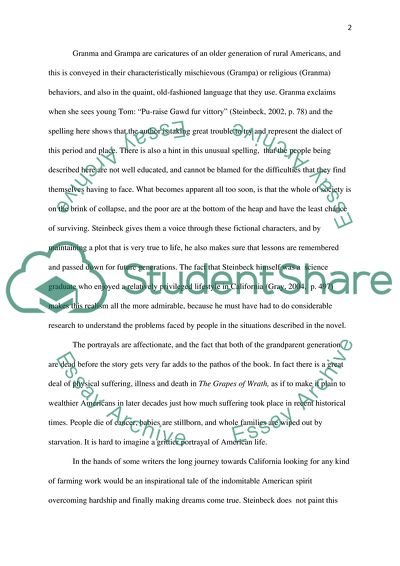Cite this document
(The Grapes of Wrath - John Steinbecks Commitment to Justice for the Poor Book Report/Review Example | Topics and Well Written Essays - 1250 words - 1, n.d.)
The Grapes of Wrath - John Steinbecks Commitment to Justice for the Poor Book Report/Review Example | Topics and Well Written Essays - 1250 words - 1. https://studentshare.org/sociology/1756356-research-paper-on-some-aspect-of-john-steinbecks-life-or-work
The Grapes of Wrath - John Steinbecks Commitment to Justice for the Poor Book Report/Review Example | Topics and Well Written Essays - 1250 words - 1. https://studentshare.org/sociology/1756356-research-paper-on-some-aspect-of-john-steinbecks-life-or-work
(The Grapes of Wrath - John Steinbecks Commitment to Justice for the Poor Book Report/Review Example | Topics and Well Written Essays - 1250 Words - 1)
The Grapes of Wrath - John Steinbecks Commitment to Justice for the Poor Book Report/Review Example | Topics and Well Written Essays - 1250 Words - 1. https://studentshare.org/sociology/1756356-research-paper-on-some-aspect-of-john-steinbecks-life-or-work.
The Grapes of Wrath - John Steinbecks Commitment to Justice for the Poor Book Report/Review Example | Topics and Well Written Essays - 1250 Words - 1. https://studentshare.org/sociology/1756356-research-paper-on-some-aspect-of-john-steinbecks-life-or-work.
“The Grapes of Wrath - John Steinbecks Commitment to Justice for the Poor Book Report/Review Example | Topics and Well Written Essays - 1250 Words - 1”. https://studentshare.org/sociology/1756356-research-paper-on-some-aspect-of-john-steinbecks-life-or-work.


